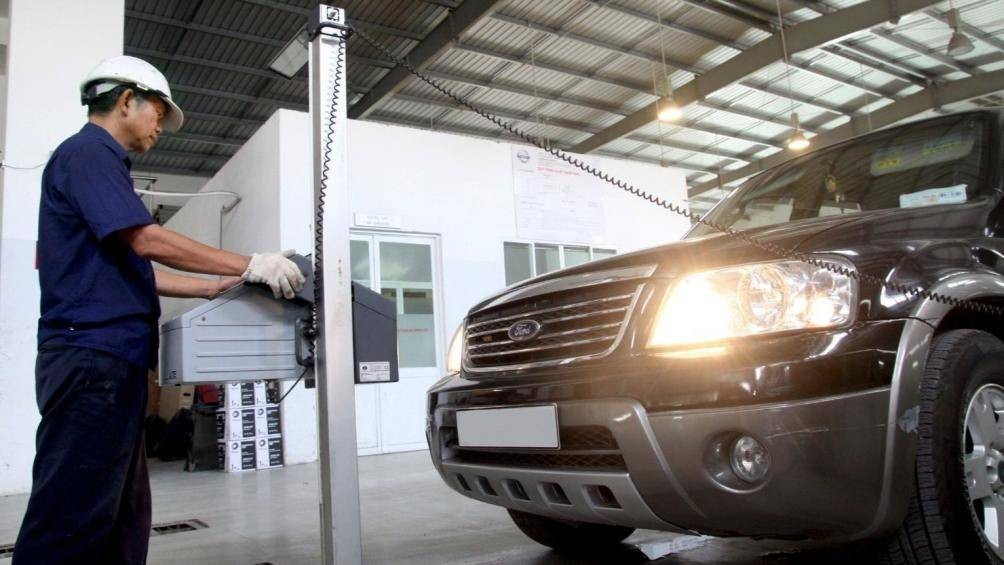Periodic truck registration is mandatory to ensure traffic safety and comply with legal regulations. During the registration process, the truck’s brake system is one of the critical components thoroughly inspected. This article from Xe Tải Mỹ Đình provides important notes on checking truck brakes before registration, helping you avoid hassles and save time.

 Truck undergoing inspection at a vehicle registration center
Truck undergoing inspection at a vehicle registration center
Typically, vehicle owners and drivers can self-check or take their trucks to a repair garage before registration. This helps the inspection process proceed quickly, saving time and repair costs, while also ensuring vehicle safety.
Experience from many long-time truck owners shows that before going for registration, it is necessary to prepare, check, maintain, and service the truck depending on its condition. The vehicle registration process includes 5 main stages, and the brake system is checked in detail during the roller brake testing stage.
Truck Brake Inspection: Core of the Registration Process
In the brake testing stage on the roller brake tester, common failures that cause vehicles to fail inspection include: excessive lateral slip of the steered wheels, low main brake (foot brake) efficiency, excessive deviation between the two wheels on the same axle of the main brake, and low parking brake (handbrake) efficiency.

 Close-up of brake components being inspected on a truck
Close-up of brake components being inspected on a truck
Important brake checks before truck registration:
- Main brake (foot brake): Drive the truck at a speed of 30km/h on a flat road with no traffic, on asphalt or concrete pavement. Then, disengage the clutch and depress the brake pedal, measuring the distance the truck travels from when the brake is applied until it comes to a complete stop. If the braking distance is greater than 9.5m for small trucks, or over 11m for large trucks, the main brake efficiency is not up to standard. Note that when braking, the vehicle body should not deviate too much to the left or right.
- Parking brake (handbrake): Drive the truck at a speed of 15km/h, apply the parking brake, and measure the braking distance. A braking distance greater than 6m is not acceptable. You can also check the parking brake by parking the truck on a 20% slope. If the truck remains stationary on this slope without rolling, it meets the requirement.
- Wheel side slip: Use 2 front tires of the same tread pattern, with uniform wear and height. Drive the truck slowly at 5km/h on a straight road, keeping the steering wheel straight. If the truck deviates significantly to the left or right, it is necessary to check and adjust the suspension system or check the wheel alignment and steering knuckle play.
Thoroughly checking the brake system before registration will help you detect problems early, ensure safety when participating in traffic, and avoid failing the vehicle inspection.
Conclusion
Checking truck brakes is an essential step not to be overlooked before taking your truck for registration. Be proactive in checking or taking your truck to reputable garages for timely inspection and maintenance, ensuring your vehicle is always in the best operating condition and complies with traffic safety regulations. Contact Xe Tải Mỹ Đình for advice and support regarding truck-related services.
